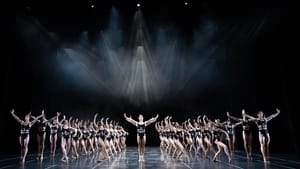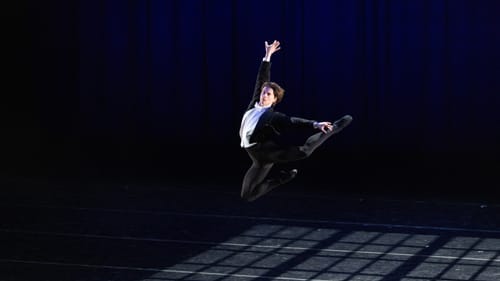Stay in the Loop
BSR publishes on a weekly schedule, with an email newsletter every Wednesday and Thursday morning. There’s no paywall, and subscribing is always free.
A triple bill of intense dance
Philadelphia Ballet presents Boléro, Water Dances, and Dance Card

March has been a big month for the Philadelphia Ballet. The company held a topping-out ceremony to celebrate lifting the final I-beam to complete the structural skeleton of its long-awaited building on Broad Street. Public television station WHYY aired a half-hour devoted to Angel Corella’s life as a dancer and as the company’s artistic director. And Corella’s new ballet, the eagerly anticipated Boléro, premiered as part of a program that featured Stanton Welch’s new Water Dances and the return of Russell Ducker’s Dance Card.
A full dance card
I have sometimes come away from a Philadelphia Ballet triple bill with a bit of finale fatigue, with each piece reaching the same level of heightened energy. But In Friday’s performance, the pacing was perfect. Welch set his Water Dances to Michael Nyman’s music of the same name, arranged for two pianos (Yen Yu Chen and Martha Koeneman on piano). Against a pale blue backdrop, the first movement opened with Yuka Iseda, Nayara Lopes, So Jung Shin, and Sydney Dolan, who seemed to float on the stage in diaphanous white tops with gracefully belled sleeves and wide white pants by costume designer Holly Hynes. They raised their arms like wings, and bent forward, their arms outstretched behind them like birds on a river. In solos they demonstrated their strength and extension, while maintaining that sense of weightlessness.
The men, in the same aethereal costumes, entered for the second movement with Zecheng Liang a commanding lead. They swept low to the stage and leapt and turned. I love a scissor leap, and Liang’s leap was huge. Movement three was full of paired lifts, as if the women were drifting along on their partners’ shoulders. The piece felt like a meditation, as if we, too, drifted down a summer’s river.
Company dancer and choreographer Russell Ducker set his piece to Jennifer Higden’s Dance Card for String Orchestra. Higdon has said Dance Card is a celebration of the joy of strings playing together. In the past, women would carry a dance card and when a gentleman asked for a dance, his name would go on the card so he would know when it was his turn to take the floor. Fittingly, this music is filled with dances and serenades. In Ducker’s gilded-age ball, gentlemen in tailcoats tucked their hands into the lapels of formal white vests and women in tea-length black dresses, very upright and en pointe, dared the men to approach for a dance. Dancers paired for quick small lifts and danced arm in arm, while Yuka Iseda and Ashton Roxander threaded their way through the dance, romance just out of reach.

A defining Boléro
The program built toward the grand finale: Corella’s Boléro. I knew that he’d been exploring the movement of Spanish dance in his work, but I wasn’t sure that there was anything new to say about Maurice Ravel’s Boléro. Ida Rubenstein had commissioned the music in 1928 for a ballet choreographed by Bronislava Nijinsky. Since that time the piece has become a mainstay of popular culture. But I had nothing to fear; from first to last, the piece held us spellbound. It was hard to remember even to breathe.
Ravel’s Boléro is a master class in building tension. It opens with the rat-a-tat of a snare drum, like a call to arms, then the flute enters, floating the tune over the drum. On the stage, Gabriele Lukasik, Jack Sprance, and Sophie Savas-Carstens appeared in stark unisex black—just a brief and bandeau—the torso wrapped with narrow straps of black. A roll of the shoulder and a lift of an arm hinted at Flamenco. As the music grew in strength and instrumentation, the stage filled with dancers, the men rocking foot to foot, heel to toe, clapping hands over their heads or resting their hands across the hip as if stepping into a flamenco.
Trios sped across the stage, with a woman raised on the arms of two men. More and more dancers filled the space with sharp, muscular movement. We are used to seeing the corps in synchronized arabesques, but the minimalist costumes bared their legs so that we could see the dancers’ form and strength. Nick Kolin’s lighting was fabulous. Light glowed off the bare skin of the dancers and cast triangles of light from the overheads, splitting and splitting, as if the light itself had joined the dancing.
The program told us that Boléro ended with 60 dancers on the stage (for the 60th anniversary of the company). It should have been chaos, but Corella has an affinity for the corps, and the movement was quick and fierce but controlled by the blocking of the dancers in tight groups. Instead of the romantic passion we usually expect of Boléro, he gave us the explosive tension of a ticking bomb.
What, When, Where
Boléro, choreographed by Angel Corella. Water Dances, choreographed by Stanton Welch. Dance Card, choreographed by Russel Ducker. Presented by Philadelphia Ballet. $25-$269 . March 20-23, 2025 at the Academy of Music, 240 S. Broad Street, Philadelphia. (215) 893-1999 or philadelphiaballet.org.
Accessibility
Find out more about the Academy of Music’s accessibility features online.
Sign up for our newsletter
All of the week's new articles, all in one place. Sign up for the free weekly BSR newsletters, and don't miss a conversation.

 Camille Bacon-Smith
Camille Bacon-Smith